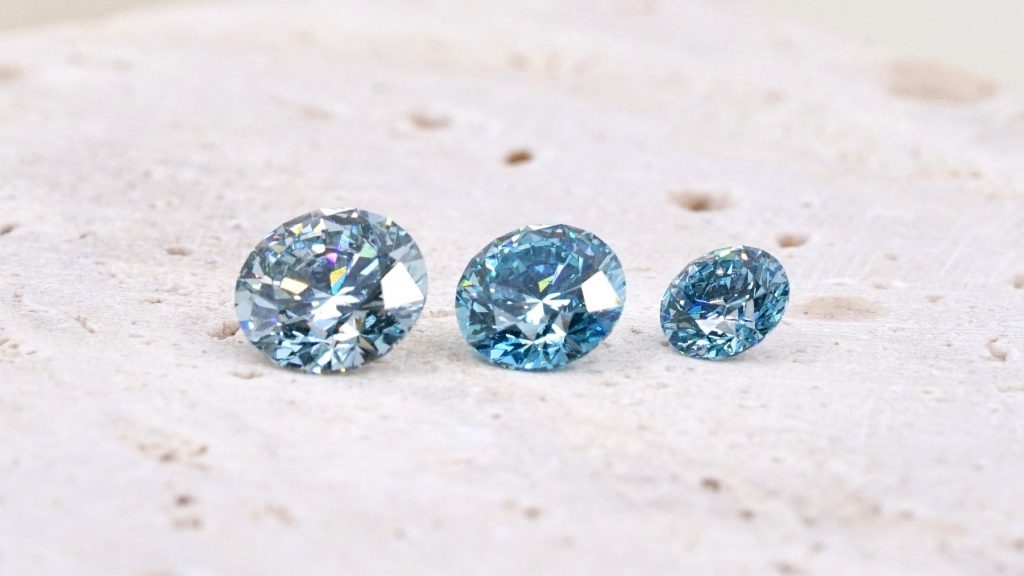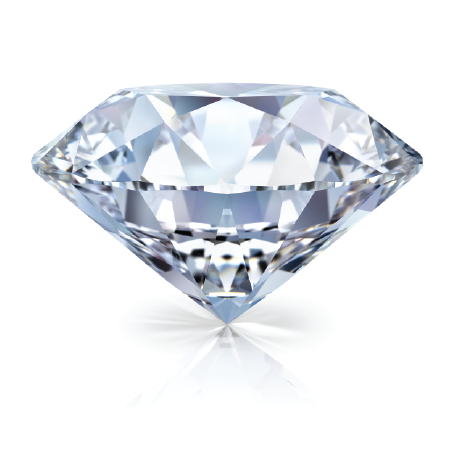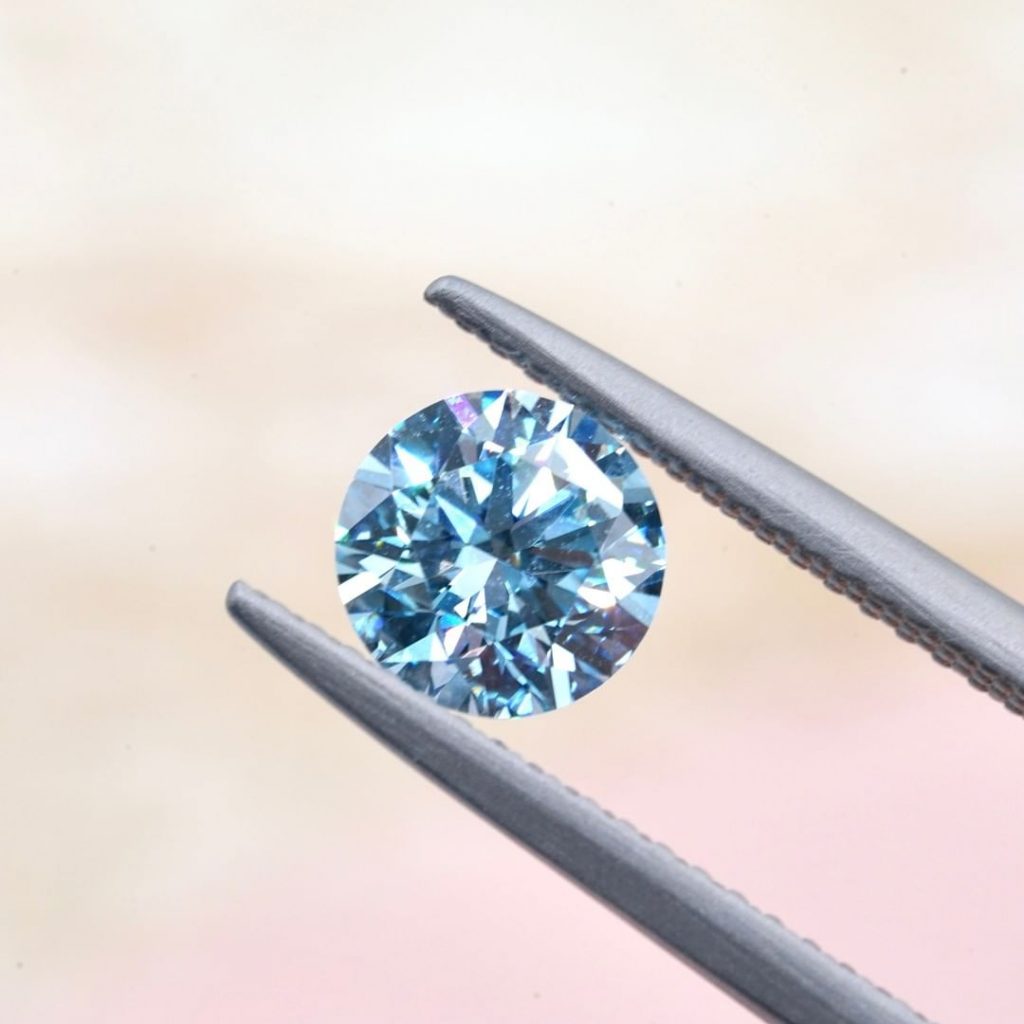For centuries, natural diamonds have reigned supreme as symbols of love, luxury, and tradition. But in recent years, lab-grown diamonds have seen a surge in popularity and have been a dazzling, ethical, and economical alternative.
This article will explore the key differences between lab-grown and natural diamonds. We will uncover the science behind their creation, compare their environmental impact, and analyze their value proposition. So, whether you are a seasoned jewellery connoisseur or simply curious about the difference between natural and lab-grown diamonds, keep reading to discover which diamond might be the perfect fit for you.

What Are The Differences?
| Natural Diamonds | Lab-Grown Diamonds | |
| Formation Process | Formed deep within the Earth’s mantle, subjected to immense heat and pressure over millions of years. Geological processes resulting in diamond crystal formation. | Created artificially through controlled processes in lab. Techniques such as Chemical Vapor Deposition (CVD) or High Pressure High Temperature (HPHT) are applied to replicate natural diamond formation on a shorter timescale. |
| Physical Characteristics | Have unique properties like color, clarity, and carat weight. Variations in natural diamonds occur due to geological factors that impact their appearance and value. | Possess comparable physical characteristics to natural diamonds. They have consistent color and clarity, sometimes with enhancements. |
| Environmental Impact | Traditional diamond mining may carry significant environmental consequences, such as carbon emissions and land degradation. | Lab-grown diamonds offer environmental benefits, with reduced carbon emissions and water usage. |
| Cost | They are usually more expensive than lab-grown. Factors like rarity and market demand influence the cost of natural diamonds. | Lab-grown diamonds are often more affordable due to their controlled production process. |
| Accessibility | Accessibility to natural diamonds varies, and it does affect the pricing dynamics. | They are increasingly accessible and usually appeal to consumers seeking value and affordability. |
Can We Tell Apart Lab-grown Diamonds From Natural?

Visual Inspection
To the naked eye, lab-grown diamonds and natural diamonds often appear identical. Both types of diamonds share the same physical characteristics, such as colour, clarity, and brilliance. This means that even professional gemologists may struggle to differentiate between them without the aid of specialized instruments.

Advanced Testing
While visual inspection alone may not reveal the origin of a diamond, advanced testing techniques can provide more definitive answers. For example, spectroscopy and microscopy can be used to analyze the diamond’s structure and trace elements. Isotopic analysis can also be employed to detect subtle differences in the carbon isotopes present in lab-grown and natural diamonds. However, these tests require specialized equipment and expertise, making them impractical for most consumers.
Lab-Grown Diamond Identification
In recent years, advancements in diamond detection technology have made it easier to identify lab-grown diamonds. Many gemological laboratories now offer services specifically designed to distinguish between natural and lab-grown diamonds. These tests may include spectroscopic analysis, fluorescence imaging, and other methods tailored to the unique properties of lab-grown diamonds.



Do Lab-grown Diamonds Hold The Same Value As Real Diamonds?
Lab-grown diamonds hold intrinsic value comparable to natural diamonds, with similar physical and chemical properties. However, market perception and cultural significance may influence the perceived value of lab-grown diamonds.


How Consumer Values are Reshaping the Diamond Industry?
Natural diamonds have long been revered in the jewellery market for their traditional prestige and cultural significance. They are prized for their authenticity and heritage, and has long become a symbol of both a deep historical value and a connection to the Earth’s natural processes. This enduring appeal is largely due to their perceived rarity and the romanticism associated with their origin.
Conversely, lab-grown diamonds, which were once viewed with skepticism, are experiencing a shift in perception. The jewelry industry is increasingly accepting these diamonds as an alternative, driven by consumer interest in ethical sourcing and sustainability.



Which One is Better? Lab-grown or Natural Diamonds?
Both lab-grown and natural diamonds offer unique advantages, and they cater to different consumer preferences. The choice between them ultimately depends on factors like budget, environmental concerns, and personal values.
Lab-grown diamonds offer a compelling alternative to natural diamonds, with advantages in sustainability, affordability, and accessibility. While both types of diamonds have their place in the market, the growing demand for eco-friendly and ethically sourced diamonds suggests a promising future for lab-grown diamonds.

Uncertain About Diamonds? Let Michael Trio Guide You
Our team of experts is here to guide you through the process of selecting the perfect diamond for your special occasion. Whether you are seeking guidance on choosing between lab-grown and natural diamonds or looking for custom design advice, we are dedicated to providing you with the knowledge and support you need to make an informed decision.
Book an appointment or visit our showroom at MyTown Mall, Kuala Lumpur today, and let us help you find the ideal diamond that reflects your unique style and love story.

